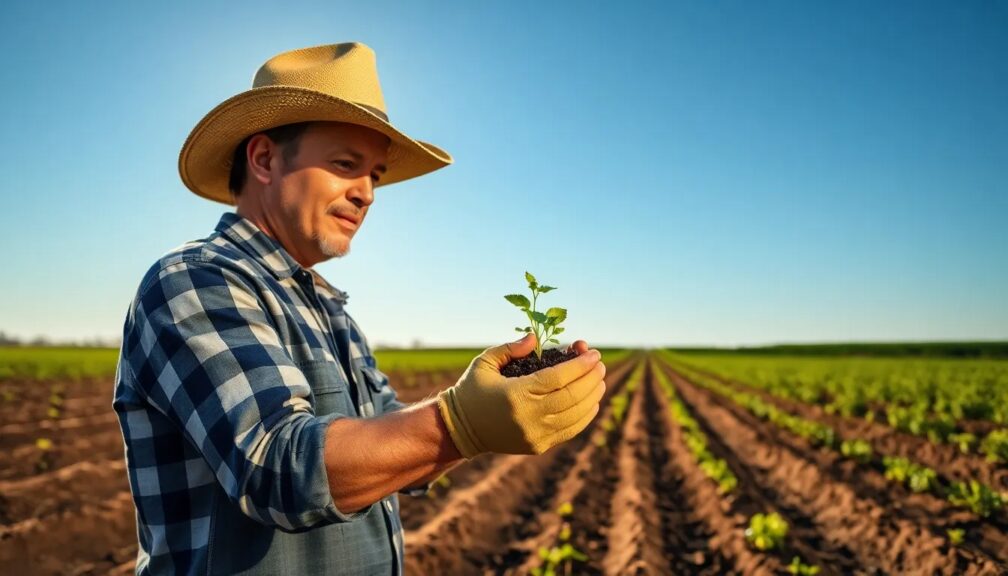Can you plant immediately after tilling

Welcome to Our Comprehensive Guide on "Can You Plant Immediately After Tilling?"
When it comes to cultivating a garden, tilling is a common practice that prepares the soil for planting by loosening it and improving its aeration. Gardeners and farmers alike often debate the optimal time to plant after tilling the soil. This article delves into the factors that affect whether you can plant immediately after tilling or if it's better to wait. Understanding the condition of your soil, the weather, and the type of crops you plan to grow are crucial components that will influence your decision. We will also explore the benefits and drawbacks of immediate planting, providing you with the necessary insights to achieve a thriving garden. Whether you're a seasoned gardener or a beginner, this guide aims to equip you with the knowledge to make informed choices for the health and productivity of your plants.
Can I plant immediately after tilling?
The moment after tilling your soil is one filled with anticipation and potential. You're standing over a bed of finely turned earth, ready to transform it into a lush garden or abundant crop. The question hanging in the air is whether you should harness this momentum and plant your seeds straight away, or if there’s an unseen wisdom in waiting.
The answer is not a simple "yes" or "no". Instead, it's intertwined with the complex dance of soil conditions, plant requirements, and environmental factors. Here's what you need to consider:
Firstly, tilling your soil is a bit like shaking up a snow globe; it disrupts the existing ecosystem, bringing dormant seeds to the surface and potentially inviting weeds to a feast. By waiting a few days, you might just save yourself from an onslaught of unwanted plants.
Moreover, freshly tilled earth needs time to settle. This settling process is crucial as it allows air pockets to escape, which can otherwise cause your plants' roots to dry out, leading to poor growth or even plant death.
However, the pull to plant is strong, especially when growing seasons are short and every day counts. The secret lies in the type of plants you're eager to grow. Some are hardy and can thrive in the freshly turned soil, while others require a more stable environment to flourish.
Imagine the feeling of seeing your plants not just survive, but thrive, because you took the time to understand the needs of your soil and your seeds. The magic of a thriving garden or farm is in the details, and those details are waiting to be uncovered by you.
Stay tuned as we delve deeper into the art of timing your planting, ensuring that your garden becomes the envy of all who lay their eyes upon it.
How long to let soil rest before planting?
Imagine unlocking the full potential of your garden, where every seed you plant bursts forth with vigor, painting your plot with a mosaic of blossoms and bounty. The secret lies not just in what you plant, but in the untold power of preparation and patience. The waiting period before sowing your seeds can be a game-changer, and though it varies, it typically ranges from a few weeks to several months.
The art of letting soil rest, known as fallowing, is an ancient practice that modern gardeners are rediscovering. It's a time for the earth to rejuvenate and replenish, ensuring that when the time comes, your garden will be a sanctuary of health and fertility.
Here's a teaser of what you'll unearth when you delve deeper into this fascinating topic:
- The role of microorganisms in soil health during the resting phase
- How organic matter decomposes and enriches the soil
- The importance of soil structure and aeration
But there's more. Timing is everything, and your soil's resting phase aligns with the rhythms of nature. The waiting might just coincide with a period of weather patterns crucial for optimal soil conditions. You'll learn why a rest during the winter's chill or the summer's heat can make all the difference.
And consider this: What if the soil is whispering its needs to you? What if you could tap into a hidden dialogue with your garden, understanding the perfect moment to begin planting? The signs are there, in the texture, color, and even the smell of the earth beneath your feet.
So, prepare to embark on a journey of discovery, where the pause before planting is not just a delay, but a profound investment in the future of your garden. The revelation of how long to let soil rest is just the beginning. Your garden is waiting to reveal its secrets, and with the right knowledge, you'll be ready to listen and act. Stay tuned, for what you'll learn next could transform your green space into a verdant paradise.
What is the next step after tilling soil?
After transforming your garden with the invigorating process of tilling, you're on the precipice of something truly remarkable – a fertile breeding ground for a vibrant tapestry of plants and crops. But don't let the anticipation slip away; the journey from tilled earth to flourishing greenery is laden with pivotal moments.
You've aerated the soil, enhanced its texture, and now, it's time to enrich it. Amending your soil with organic matter is akin to sprinkling magic dust over your garden. The addition of compost, manure, or peat moss acts as a feast for the earth, introducing essential nutrients and beneficial microbes that supercharge growth.
But this is not the time to rest on your laurels! Testing your soil is the hidden secret behind many green thumbs. By understanding the pH and nutrient levels, you tailor your gardening strategy, ensuring you give your plants exactly what they need – no more guesswork.
Imagine stepping into your garden, the scent of fresh earth mingling with the anticipation of growth. This could be a reality, but the next stage calls for strategic planning. Mapping out your garden, considering companion planting, and understanding the needs of your future plants are crucial for maximizing yields and creating a harmonious ecosystem.
As you teeter on the brink of transforming your tilled soil into a vibrant garden, remember that the next steps are your gateway to an awe-inspiring green space. The seeds you sow, both literally and figuratively, will determine the lushness of your harvest.
Grab your gardening tools, embrace the excitement, and prepare to dive into the next chapter of your horticultural adventure. You won't want to miss the results.
Can I plant grass seed right after tilling?
Absolutely! For anyone looking to transform their yard into a lush green oasis, the process you're considering is not just possible, it’s a gardener's best-kept secret. By sowing grass seed immediately following tilling, you take advantage of the prime soil conditions that make for excellent seed-to-soil contact.
Here's why you can't afford to miss out:
1. Tilling breaks up compacted soil, which is essential for root growth.
2. Freshly tilled soil is easier for seeds to penetrate, meaning better germination rates.
3. The mix of soil and organic matter creates an ideal bed for seeds to thrive in.
But wait, there's more to it! Before you rush out to scatter that seed, consider these success-boosting steps:
- Ensure soil moisture levels are optimal. Too dry or too wet can hinder your success.
- Choose the right time of year – generally, early fall or late spring are best for most grass types.
- Select a high-quality grass seed that suits your climate and yard conditions.
Imagine stepping out into a yard that’s the envy of the neighborhood, with minimal effort on your part. Seize the moment after tilling, and you're paving the way for that dream to become a reality. Don't let the opportunity slip through your fingers – your perfect lawn awaits!
Can you plant immediately after tilling soil
Transforming your garden into a lush and bountiful oasis begins with the critical step of preparing the soil. The moment you turn the earth with a tiller, you may feel an irresistible urge to plant your seeds or seedlings, envisioning the future harvest. But is it prudent to do so?
Understanding the timing and conditions necessary for planting is akin to grasping the secrets of a master gardener. When the soil is freshly tilled, it appears loose and inviting, hinting at the perfect bed for your plants. However, patience is a virtue that often reaps the greatest rewards.
The answer to whether you should introduce your crops to their new home right away is not a simple yes or no. Several factors must be considered, such as the type of plants you intend to grow, the condition of the soil, and the weather patterns at the time of tilling.
For instance, planting in soil that is too loose can lead to poor root establishment, leaving your plants vulnerable and weak. Moreover, if rain is in the forecast, newly tilled soil can compact, effectively suffocating the roots. This highlights the importance of allowing the soil to settle and ensuring it achieves the right consistency for your plant's needs.
Are you ready to unlock the full potential of your garden? The following steps will guide you through the process and ensure that your plants thrive:
1. Assess the soil texture – After tilling, feel the soil. It should be crumbly, not too wet or dry.
2. Consider the weather – Planting before a heavy rain can ruin the soil structure. Wait for stable weather conditions.
3. Allow the soil to rest – This can help to stabilize the soil's temperature and moisture levels, creating a more hospitable environment for your plants.
By taking the time to understand the needs of your soil and plants, you'll set yourself up for a garden that's the envy of the neighborhood. Remember, the secret to a thriving garden lies in the details. Don't rush the process; the results will be worth the wait.
Uncover more insights and tips to elevate your gardening game and keep your green thumb pulsing with excitement. There's a wealth of knowledge waiting to be unearthed, and your journey to becoming a gardening guru is just beginning.
Consejo final: Before planting immediately after tilling, ensure the soil has settled and is free of large clumps. This will provide an optimal environment for seed germination and root growth. Best of luck with your gardening endeavors!
 Does tilling cause more weeds
Does tilling cause more weeds Do I need to remove weeds before tilling
Do I need to remove weeds before tilling What is better a tiller or cultivator
What is better a tiller or cultivator Can you plant vegetables without tilling
Can you plant vegetables without tilling Will a tiller break up hard soil
Will a tiller break up hard soilIf you want to know more about similar articles like Can you plant immediately after tilling you can visit category Gardening Tools.